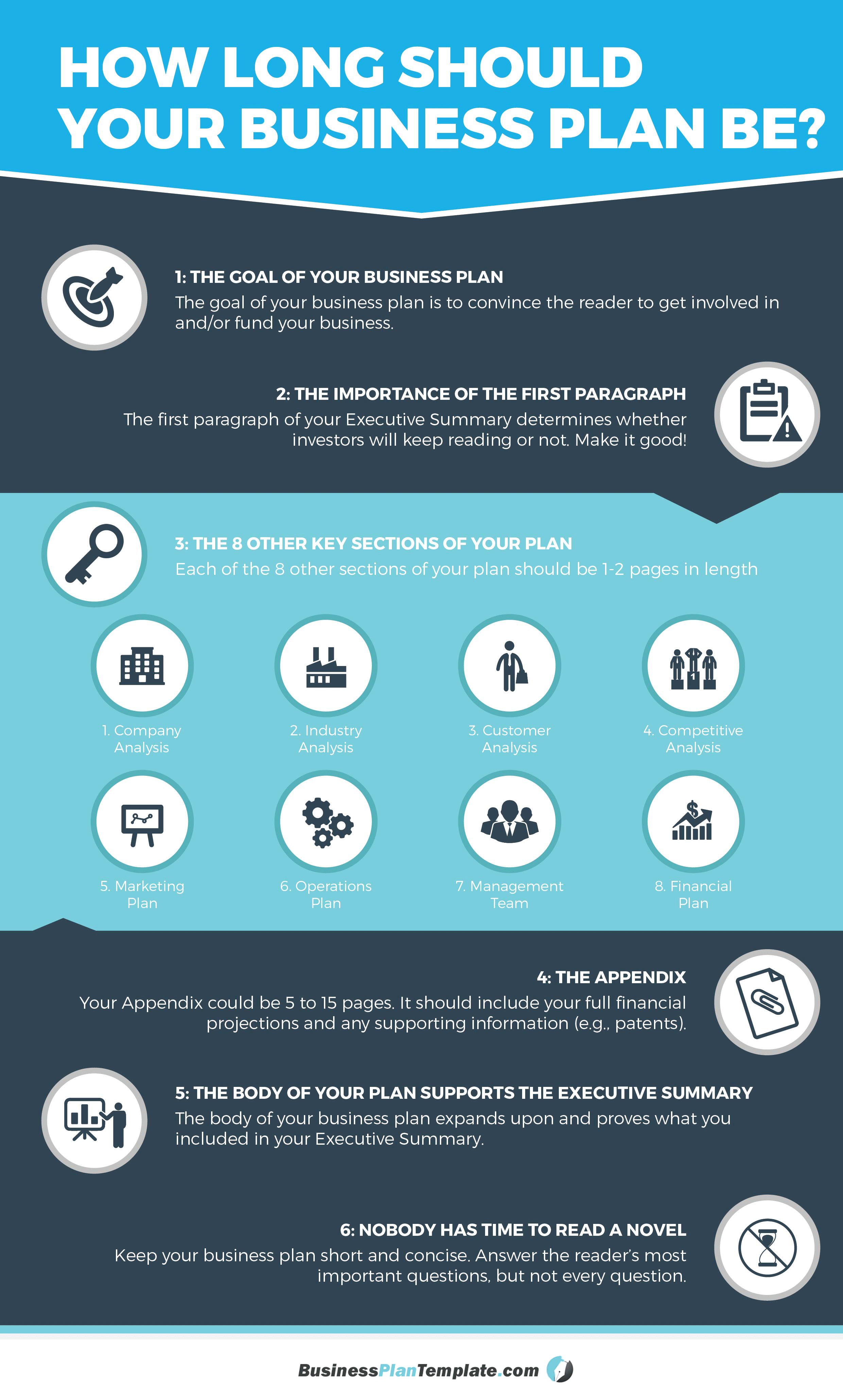 Your business plan should be as long as is required to convince the reader that your business plan is worth investing in or taking an interest in.
Your business plan should be as long as is required to convince the reader that your business plan is worth investing in or taking an interest in.
That being said, the average length of a business plan to accomplish that goal is 15 to 25 pages.
 The Ultimate Mission of Your Business Plan
The Ultimate Mission of Your Business Plan
Importantly, to determine the ideal length of your plan, remember the ultimate mission of your plan. That mission is to convince the reader to get involved in and or fund your business. If your business plan is too short, you’re probably not giving them enough information on your business. Conversely, if it’s too long, you’re providing too much information and you’re going to bore them, with the result being that they’ll lose interest.
Because length matters, the most important part of your business plan is clearly the first page or pages of your business plan. The first page is usually the cover page, followed by the table of contents. And then, the first real page of content is your Executive Summary. This is why the Executive Summary is so important. Because if you don’t capture the interest of the reader here, on these first pages, they’re just not going to read on.
 In particularly, the very first paragraph of the Executive Summary is of critical importance because if you don’t excite somebody right away, they are not going to keep reading.
In particularly, the very first paragraph of the Executive Summary is of critical importance because if you don’t excite somebody right away, they are not going to keep reading.
I typically want the Executive Summary to be one to two pages to get the reader interested in your business. Then, the rest of your plan supports the Executive Summary and goes into more detail about what your business is about, what products and or services you will offer, what is your marketing plan, what are the highlights of your financial plan, etc.
After the Executive Summary, there are 9 other key sections of your business plan. Each of these sections should be one to two pages each. And so, if we take an average of 1.5 pages per section times 10 sections (including the Executive Summary), we now have our 15-page business plan.
Importantly, the final section of your plan is your Appendix. Your Appendix could be longer than other sections because here you’ll include your full financial statements — your income statement, balance sheet, and cash flow statement – and any other supporting documentation. But once again, the core of your business plan should be only 15 to 25 pages, or whatever amount of text and or pages is required to convince the reader that this is an opportunity worth pursuing.
 Your Plan Supports Your Executive Summary
Your Plan Supports Your Executive Summary
Let’s revisit your Executive Summary since it’s so important to the success of your plan. Importantly, in your Executive Summary, you must convey why your business is exciting and why it’s going to be successful.
Then, the rest of the document, that is, in the rest of your business plan, you will support this. For example, you might say in the Executive Summary that “our business is poised for success because we are competing in this market. This market currently enjoys sales of $845 million per year and is growing at a rate of 9% per year.”
This is enough research to include in the Executive Summary to get the reader or investor interested. Then, in the body of your plan, particularly in the Industry Analysis section, you must include whatever supporting information to prove this fact and go into more depth.
Specifically, in the Industry Analysis section, you would not only repeat that “the market size is $845 million and is growing by 9% per year” but you’ll cite different sources proving these figures. You’ll discuss different segments of the market. You’ll mention different geographic regions of the market, and so on. In summary, in the Industry Analysis section of your plan, you’ll go into as much detail as is required to further prove that the market opportunity is sound.
Likewise, in your Marketing section, you’ll go into as much detail as is required to prove your marketing plan is sound. For example, if one of your promotional strategies is PR or public relations, you’ll detail what specific newspapers, magazines, and websites you will target backed up by research on the customer demographics of those media sources. You’ll also discuss your PR strategy, such as whether you’re going to hold events or create stories.
 Nobody’s Going to Read a 100 Page Business Plan
Nobody’s Going to Read a 100 Page Business Plan
A final and important point on the ideal length of your business plan is that you want to make sure to include enough information to answer the reader’s most important questions, but not every question.
If you answer every question, your plan will be too long and you will bore most readers. Remember, nobody’s going to read a 100-page business plan. Rather, include the critical, concise information upfront in your Executive Summary and then, in the other sections of your plan, provide enough information to prove what you’ve said in the Executive Summary, add additional detail, and answer core questions that investors or readers will have when reading your plan.
Business Plan Length Infographic
Below is an infographic of this article for quick reference.
Recommended Slideshare
We put together the slide presentation below entitled “How Your Business Plan Should Look” to give you additional pointers on creating a great business plan. These pointers allow you to keep your business plan short in length, but still very impactful.

 Your business plan should be as long as is required to convince the reader that your business plan is worth investing in or taking an interest in.
Your business plan should be as long as is required to convince the reader that your business plan is worth investing in or taking an interest in.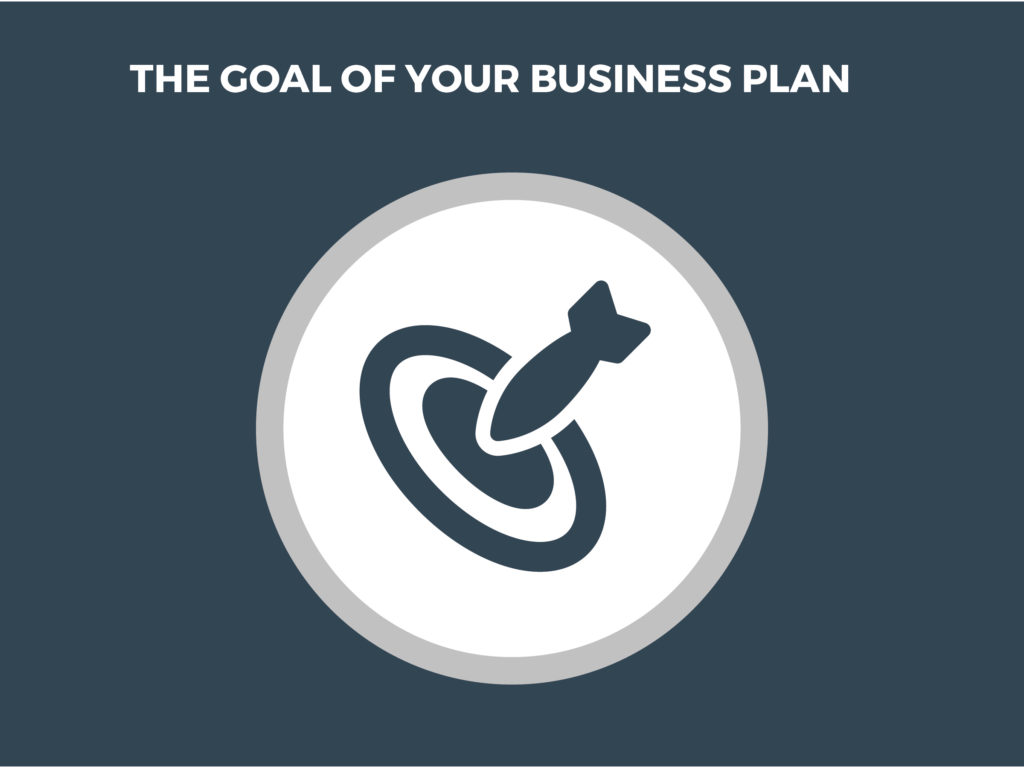 The Ultimate Mission of Your Business Plan
The Ultimate Mission of Your Business Plan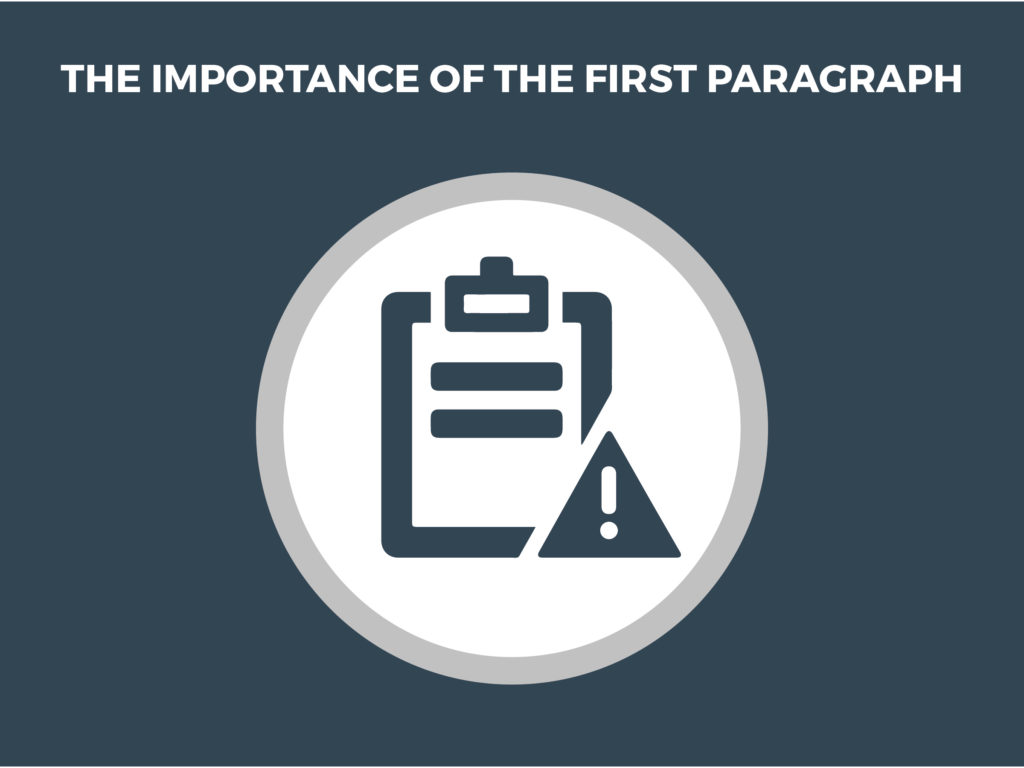 In particularly, the very first paragraph of the Executive Summary is of critical importance because if you don’t excite somebody right away, they are not going to keep reading.
In particularly, the very first paragraph of the Executive Summary is of critical importance because if you don’t excite somebody right away, they are not going to keep reading.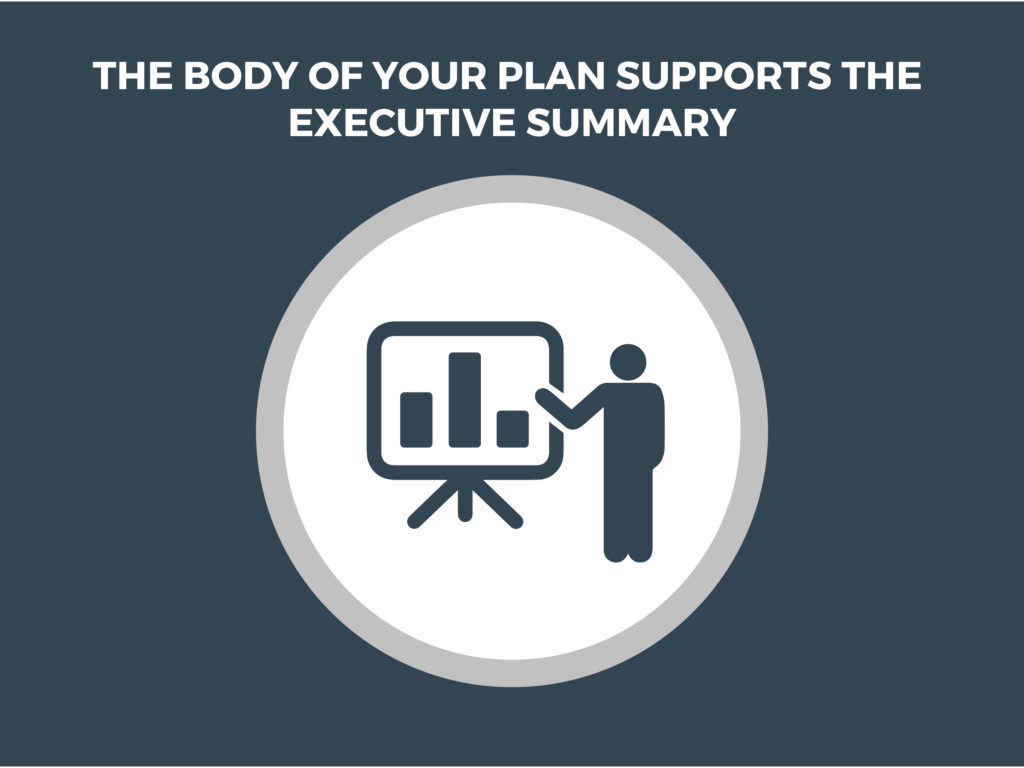 Your Plan Supports Your Executive Summary
Your Plan Supports Your Executive Summary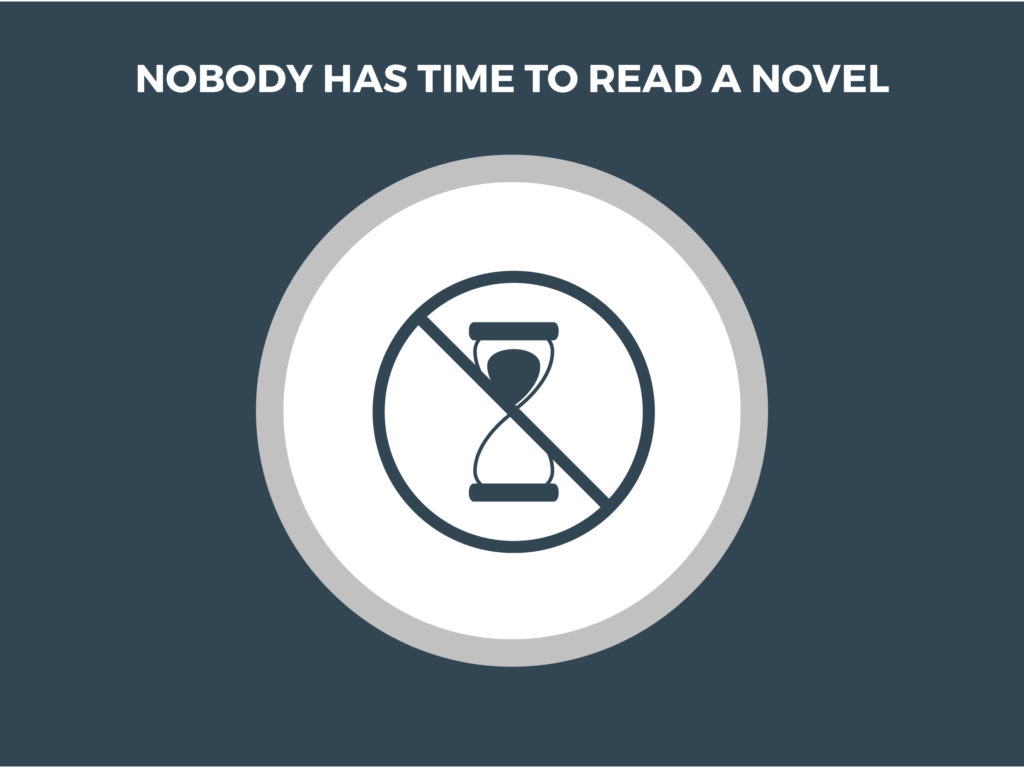 Nobody’s Going to Read a 100 Page Business Plan
Nobody’s Going to Read a 100 Page Business Plan